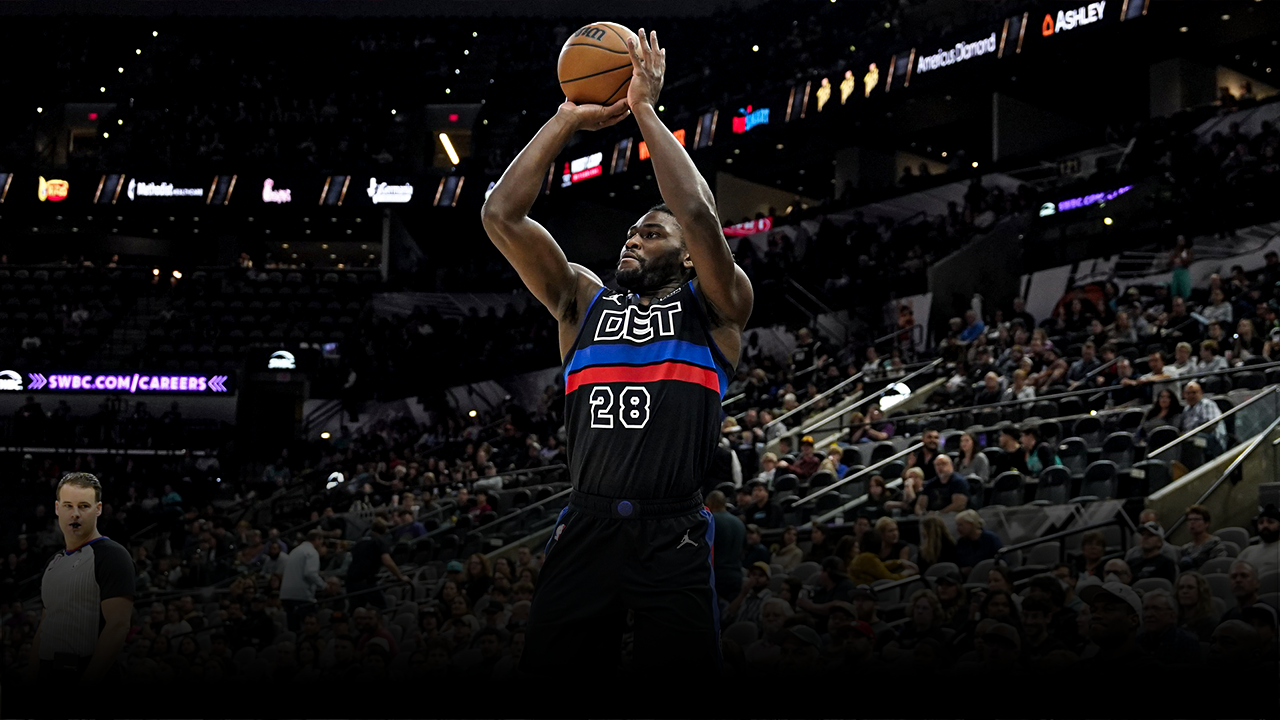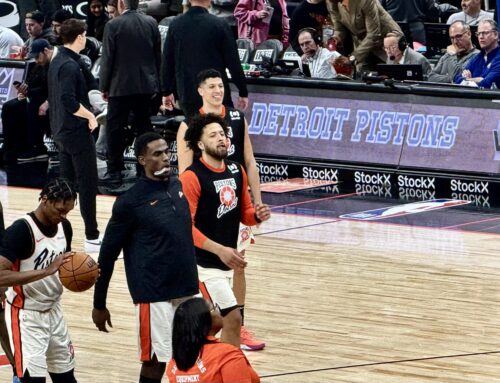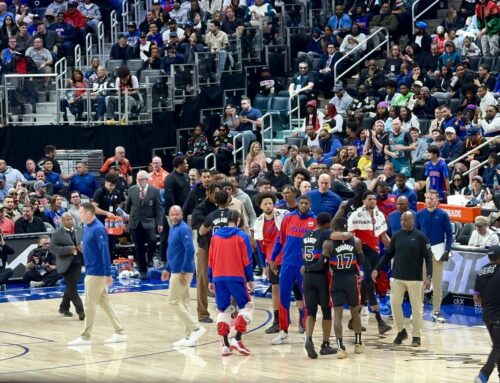Do you believe Isaiah Stewart will prove to be the Detroit Pistons long term starting power forward? The arguments that made to start the season centered around his ability to stretch the floor effectively. I personally wondered if he’d be able to rebound and patrol the paint at an effective enough rate. And at 6’8″ he isn’t necessarily on the taller side of players at his position.
But on draft night and after, general manager Troy Weaver called Isaiah Stewart part of the core foundation of the team. Obviously things can change as time goes on, but in order for the restoration to be completed a dependence on internal growth is necessary.
There were many statements of hope at the Detroit Pistons media day. Some that haven’t panned out as well such as the team vowing to be “competitive nightly”. Injuries to multiple rotation players including star Cade Cunningham, has set the team back from where Weaver said was “ground zero”. But there’s been one promising development amidst a season not going as promised by the team.
When asked what the focus of his off-season workouts was, Isaiah Stewart said he was studying Al Horford. He said he wished to have a similar effect on the game defensively and offensively as the 6’9″ 240 pound power forward. He stands just an inch taller, but 10 pounds lighter than Stewart if you were comparing.
Check out all of our Pistons coverage with Woodward Pistons via YouTube
Subscribe to Woodward Pistons on Apple Podcasts|Spotify|Spreaker
The Transition to Stretch-4
When I first heard this my ears perked up realizing the potential that could be. But could he shoot it well enough to stretch the floor, and could he have bigger impact on the game than his height. The Pistons can consider themselves beyond lucky to have a few of the undersized big man greats in its history. Ben Wallace and Dennis Rodman just to name a few. But the NBA game was different then, and the notion of position-less basketball wasn’t as prevalent as it is today.
So for Stewart, he would need to bring more than just his tenaciously rugged style of play to make things work. Similar to Al Horford he would need to also space the floor on offense, and prove proficient executing and defending the pick and roll.
After a slow start to the season shooting 18.2% from three over the first five games of the season, many fans and observers wanted the experiment to end. But Stewart has turned things around and is now shooting 35% on 4.3 three point attempts per game.
This was an area that helped take Al Horford’s game to the next level as well. The game changed right in the middle of his prime. But he didn’t skip a beat. He went from not taking too many threes his first 8 seasons, to taking about the same four outside shots per game Stewart currently sits at. Horford also had similar shooting percentages which should encourage you on Stewarts progress. Especially showing the ability to adapt so early in his career.
True Impact
It did have an adverse effect on Al Horford’s rebounding numbers. One he began shooting threes in season 8, he never averaged over 7.4 rebounds per game. That’s down from just over 9 per game, with a peak of 10.2 per game in year six.
This helped to put my concerns to rest as it relates to Stewart never averaging a double-double in his career yet. As well as perceived low rebounding numbers compared to other big men across the league, including former Pistons bigs of past. But as Horford showed, this doesn’t define the impact of players like them.
Head coach Dwane Casey’s comments said it all when referencing the intrinsic impact he Stewart has on the game. “He (Isaiah Stewart) is not always perfect but… He’s the spirit of the team, he’s the energy.”
There’s a noticeable difference when Stewart has been injured or subbed out for the Pistons. As is the case with Jalen Duren too. The big man duo has proven to be a formidable pairing that works even better when in tandem. But particularly referencing Stewart, his energy and physicality is more valuable than a few extra rebounds per game.
What Needs To Improve
While Isaiah Stewart has shown versatility on the offensive side of the a ball, one area could use a boost. Al Horford routinely finished games with four or five assists after he began to shoot the three ball. For Stewart this is an area that would take his game to the next level, and open up even more for he and his teammates. Currently Stewart is averaging about 1 assist per game for his career. It’s not a bad mark to be at for a power forward, but will need to improve in terms of having the Horford-like impact he’s chasing.
He also acknowledged to still be learning to play NBA defense at an elite level. This is an area I’ve been satisfied with in regard to Stewart. As the team acquires more defensive talent, the impact of Stewart should be even more noticeable. But improving at one-on-one post defense would further move him toward benefiting in even more ways similar to Horford.
In only year three, Isaiah Stewart is acquitting himself quite well so far. What do you think?
What’s Next
The Detroit Pistons play the Philadelphia 76ers Tuesday, January 10th, at 7 PM.
Want More Detroit Pistons?
Check out all of our Pistons coverage with Woodward Pistons via YouTube
Subscribe to Woodward Pistons on Apple Podcasts|Spotify|Spreaker
Follow Brandon Dent (Woodward Sports Network Pistons Beat Reporter) aka @DetroitKoolAid on Twitter and Instagram for more WSN Pistons Coverage.
Photo Credit: Scott Wachter-USA TODAY Sports












